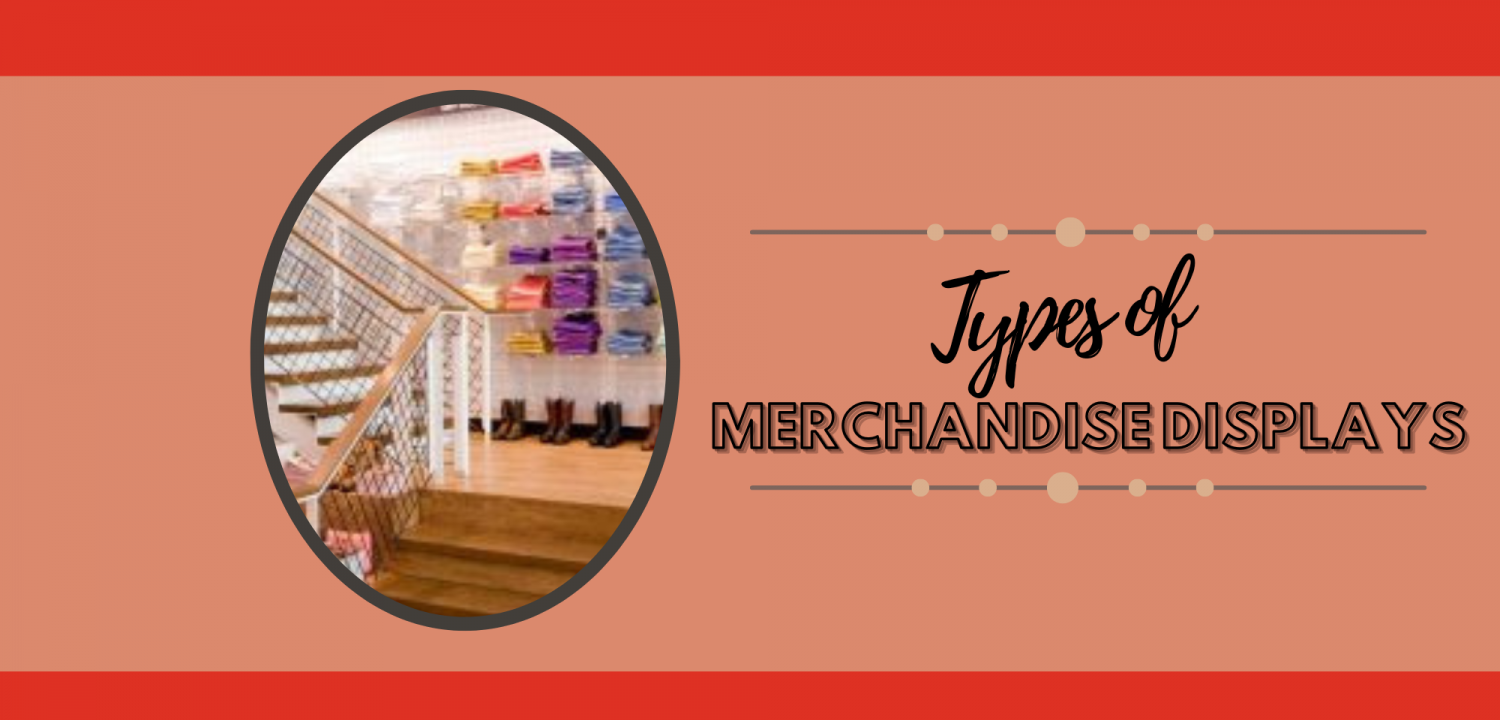Types of Merchandising Displays
There are several types of merchandising displays, including:
- Window displays: These displays are located in the front window of a store and are used to attract customers and showcase merchandise.
- Endcap displays: These displays are located at the end of an aisle or at the end of a gondola and are used to highlight products and increase sales.
- Floor displays: These displays are freestanding and are used to showcase merchandise in high-traffic areas of a store.
- Countertop displays: These displays are small and sit on a counter or checkout stand to promote smaller products or impulse purchases.
- Wall displays: These displays are mounted on a wall and can be used to showcase products or provide information to customers.
- Gondola displays: These displays are typically used in grocery or retail stores and are long shelves that run down an aisle.
- Interactive displays: These displays use technology to engage customers and provide an interactive experience with the products.
- Pop-up displays: These displays are temporary and are used for short-term promotions or events.
- Table displays: These displays are used to showcase merchandise on tables and can be used to highlight new or seasonal products.
- Mannequin displays: These displays use mannequins to showcase clothing and accessories in a way that allows customers to see how the items look when worn.
Window Displays
A window display, also known as a shop window or storefront display, is a marketing technique used by retailers to attract customers and showcase their merchandise. It involves arranging products, props, and lighting in an eye-catching and appealing way in the windows of a store to draw attention to the store and entice passersby to come inside. Window displays are often changed frequently to promote new products or sales, and they play a critical role in creating the overall brand image of a store.
End cap Display
End cap displays are a type of retail display located at the end of an aisle or a section of a store. They are designed to attract the attention of customers as they walk through the store, and can be used to promote a particular product or brand, or to showcase seasonal or themed merchandise.
There are several key elements that go into creating an effective end cap display. First and foremost, the display should be eye-catching and visually appealing, with attention-grabbing colors and graphics. The product or products being featured should be prominently displayed, with clear signage and pricing information.
Another important aspect of end cap displays is their location within the store. They should be strategically placed in high-traffic areas, such as near the checkout or entrance, to maximize their visibility and impact.
Finally, end cap displays should be regularly updated and refreshed to keep customers engaged and interested. Retailers can use seasonal themes, new product launches, or promotional events to keep their displays fresh and exciting.
Overall, end cap displays can be a highly effective tool for retailers looking to increase sales and drive traffic to their store. By following these best practices, retailers can create compelling displays that capture the attention of customers and generate positive results for their business.
Floor Display
Floor displays are an effective way of showcasing products in a retail environment. They are strategically placed in the sales floor to attract customers and entice them to make a purchase. Floor displays can be used to promote new products, seasonal items, and sale items, among others.
Here are some tips for creating effective floor displays:
- Choose the right location: The location of a floor display is crucial to its success. Place the display in a high-traffic area, near the entrance or checkout area to ensure maximum visibility.
- Keep it simple: Floor displays should be easy to understand and should not overwhelm customers with too many products or information. Use clear signage and simple messaging to attract customers.
- Use lighting: Lighting can be used to highlight products and make the display more visually appealing. Use spotlights or other lighting fixtures to create a focal point for the display.
- Use props: Props can add visual interest to the display and help to create a theme. Use props that are relevant to the products being displayed.
- Change it up: Change the display regularly to keep customers interested and engaged. Rotate products, change the theme or add new props to keep the display fresh and exciting.
- Be creative: Floor displays provide an opportunity to be creative and showcase products in a unique way. Use your imagination to create displays that are eye-catching and memorable.
Floor displays come in a variety of shapes and sizes, including bins, racks, and pedestals. They can be made from a range of materials, including wood, metal, and acrylic. When designing a floor display, consider the size and weight of the products being displayed, as well as the overall look and feel of the display.
Countertop Displays
A countertop display is a small, portable display that sits on a counter or tabletop to showcase products. It is typically used to display small items such as jewelry, cosmetics, or small electronics, and can be made of various materials such as acrylic, wood, or metal. Countertop displays are designed to attract the attention of customers and encourage them to make impulse purchases. They can be used in a variety of settings, including retail stores, trade shows, and exhibitions.
Wall Displays
Slat Wall
A slat wall, also known as slot wall or slat board, is a type of display panel used in retail stores to showcase merchandise. It is made of horizontal grooves or slots that allow various fixtures, hooks, shelves, and other display components to be inserted and adjusted to create customized displays. Slat walls are typically made of medium-density fiberboard (MDF), which is a dense, durable, and inexpensive material that can be painted or laminated in different colors and finishes to match the store’s aesthetic. Slat walls are versatile, modular, and easy to install, making them a popular choice for retailers looking for flexible and cost-effective display solutions.
Panel Options
Slat walls are versatile and functional display systems that allow retailers to showcase their merchandise effectively. There are various panel options available for slat walls, each offering unique benefits.
- MDF (Medium Density Fiberboard) Panels: MDF panels are the most commonly used panels for slat walls. They are cost-effective, durable, and come in a variety of finishes, including wood grain, solid colors, and metallics.
- Metal Slat Walls: Metal slat walls are sleek and modern, providing a contemporary look to any retail space. They are also durable and easy to clean.
- Glass Slat Walls: Glass slat walls add a touch of sophistication and elegance to any retail space. They are perfect for high-end stores that want to showcase their products in a stylish way.
- Acrylic Slat Walls: Acrylic slat walls are lightweight, durable, and come in a variety of colors. They are ideal for stores that want a modern and contemporary look.
- Fabric Slat Walls: Fabric slat walls provide a softer, more elegant look to retail spaces. They come in a variety of textures, colors, and patterns and are perfect for stores that want a cozy and inviting atmosphere.
- Slat Walls with Graphics: Slat walls with graphics are an excellent way to showcase your brand and products. You can add your logo, tagline, or images of your products to the slat walls to create a unique and eye-catching display.
- Custom Slat Walls: Retailers can create custom slat walls to fit their specific needs. They can choose the size, shape, color, and material to create a display that perfectly showcases their merchandise.
Accessories for a slat wall
When purchasing a slat wall ensure you also purchase the necessary accessories for your wall. Accessories available but not limited too are slat wall are peg hooks, shelf brackets, bulk bin, face outs, waterfalls, u- rails, shelving, metal dividers, literature holders etc. These items may come in acrylic, metal or metal coated to best suit your merchandising needs.
Check out https://www.kc-store-fixtures.com/slatwall or the link below to see some available options and decide what you need for your future slat wall. There are various fixture locations available for those with seller’s permits within your area of business however these were the first two options found on slatwall and available accessories.
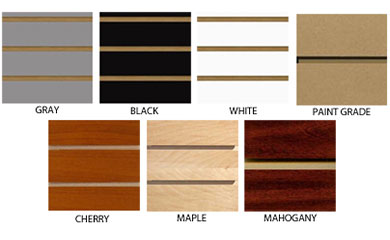
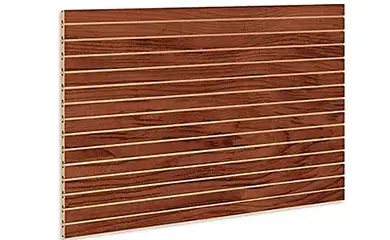
Grid Wall
A grid wall is a type of display fixture commonly used in retail stores, trade shows, and craft fairs. It consists of a metal panel with a grid pattern of square or rectangular holes, allowing for various attachments such as hooks, shelves, and baskets to be inserted and easily moved to create a customized display. Grid walls are often used for displaying small to medium-sized merchandise and are popular for their versatility and ease of use. They come in different sizes and can be configured in various ways to fit a store’s specific needs.
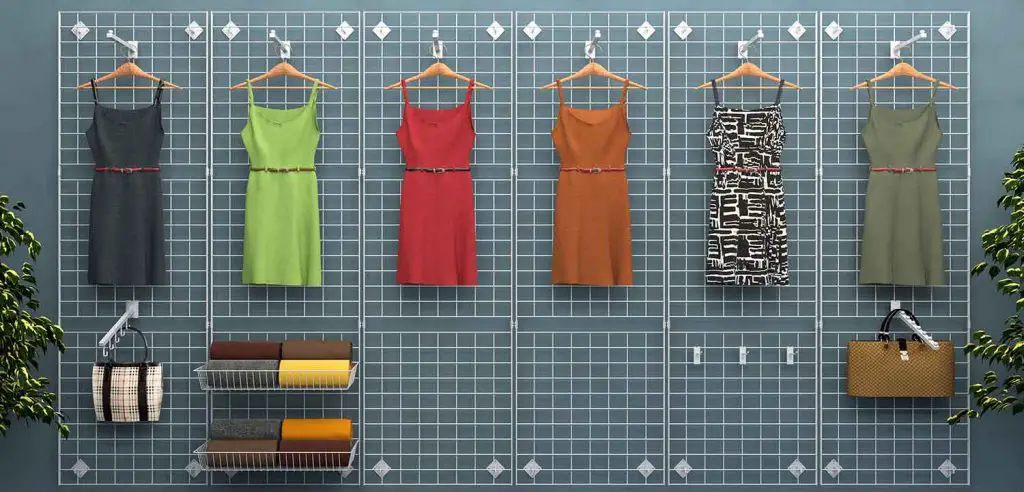
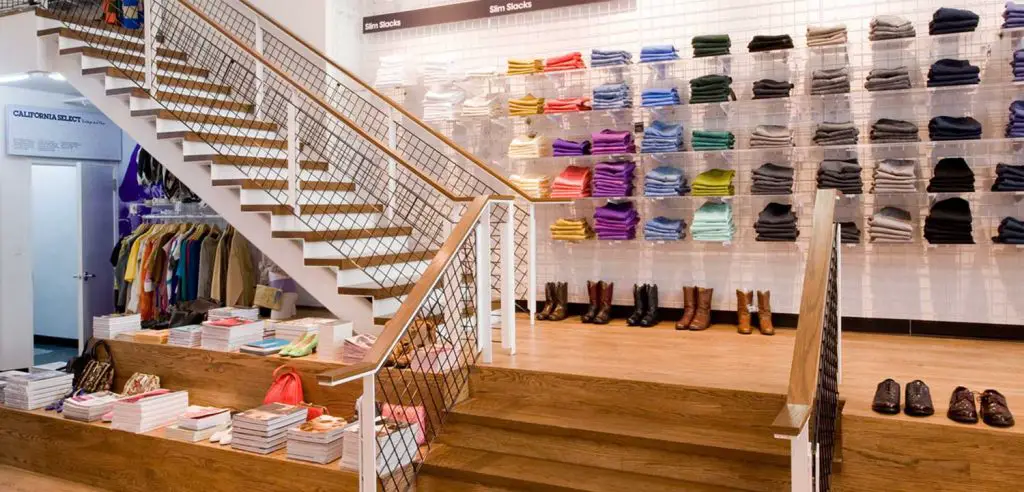
Examples of Grid Wall
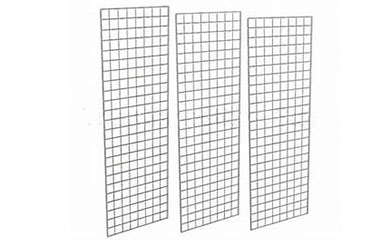
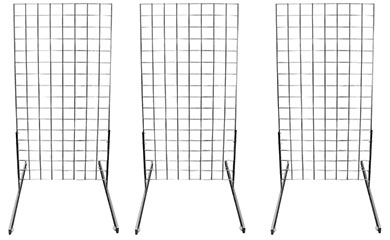
Accessories for a Grid Wall
Accessories for a grid wall include hooks, brackets, shelves, baskets, and hanging bars. These accessories can be used to display various types of merchandise, such as clothing, shoes, jewelry, and home decor. Grid wall accessories come in a variety of sizes and styles to fit the specific needs of the retailer and their merchandise. Additionally, there are also lighting and signage options available for grid walls to enhance the overall visual appeal of the display.
Gondola
type of display fixture that is typically used in retail stores to showcase merchandise. It is a freestanding unit that consists of a base, uprights, and shelves or hooks. Gondolas are designed to maximize space and display merchandise in an organized and visually appealing manner. They are often placed in the center of the store or in high-traffic areas to draw customers in and encourage browsing. Gondolas come in a variety of shapes, sizes, and colors, and can be customized to fit the needs of the retailer and the products being sold.
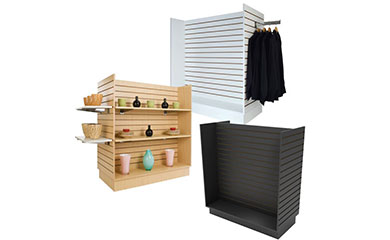
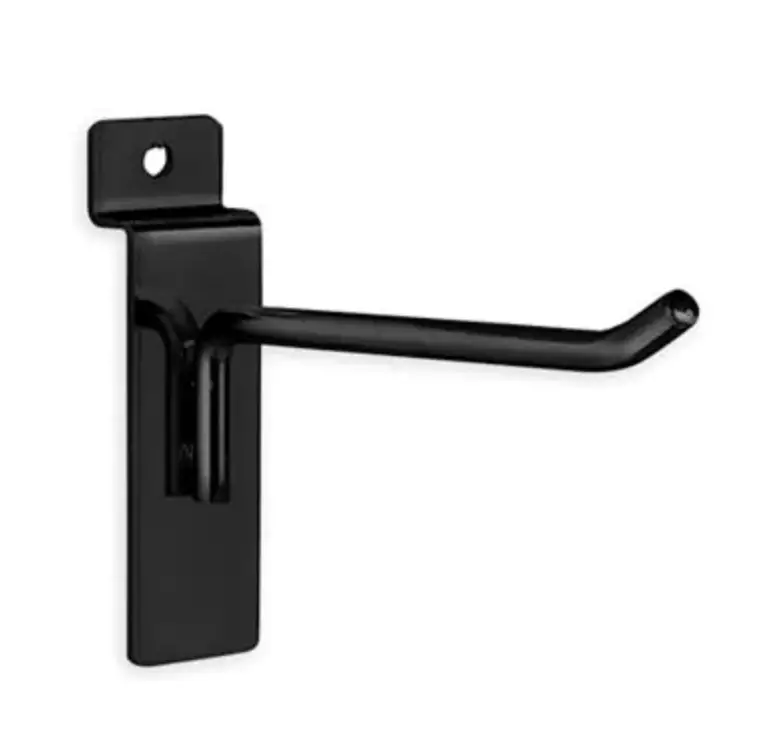
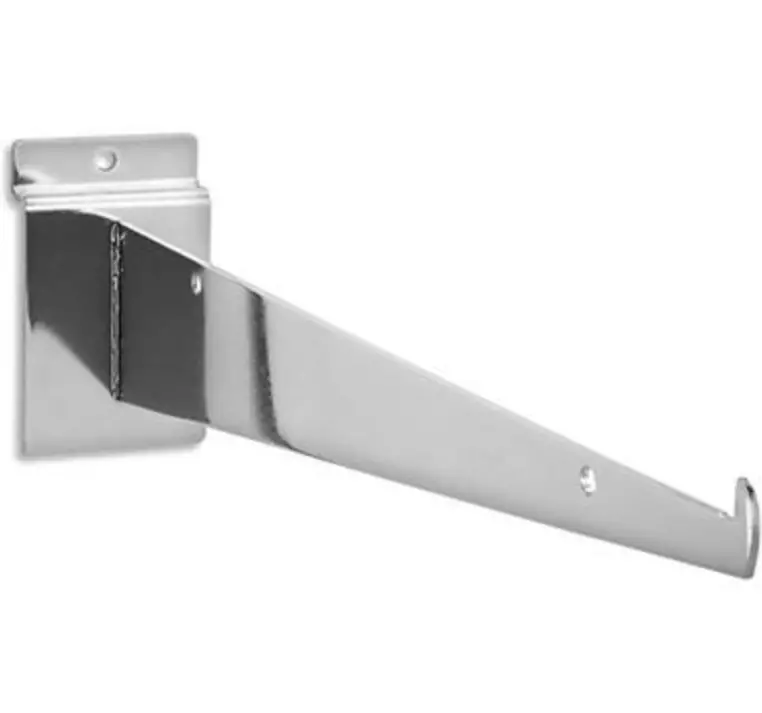
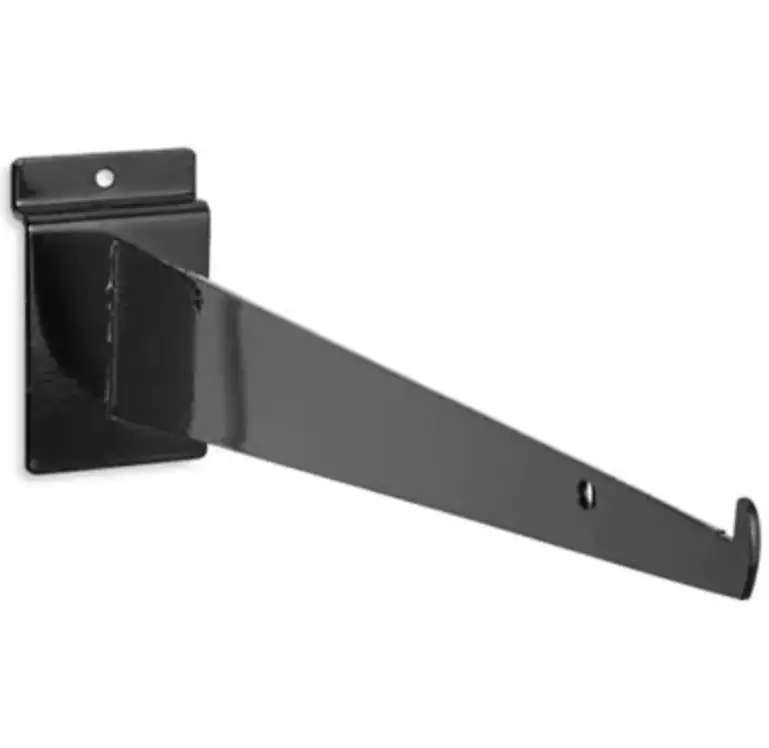
Peg Board
A pegboard display is a type of store fixture commonly used in retail stores to display merchandise. It consists of a flat board made of wood, metal, or plastic with evenly spaced holes that allow for the attachment of hooks or pegs. Pegboard displays are often used to showcase small items such as tools, hardware, toys, and craft supplies. They are versatile, easy to customize, and can be used to create both vertical and horizontal displays. Pegboard displays are popular because they are cost-effective and allow for easy rearrangement of merchandise.
Interactive displays
Interactive displays are digital displays that allow users to interact with the content being displayed. These displays often use touch screens or gesture recognition technology to allow users to control the display and access information or services. Interactive displays can be used in a variety of settings, such as retail stores, museums, educational institutions, and trade shows, to provide engaging and personalized experiences for users. They can be used to showcase products or services, provide information or entertainment, or even facilitate transactions. Interactive displays are becoming increasingly popular as technology continues to advance, and they offer a wide range of possibilities for engaging and connecting with customers.
POP Display
A POP display, also known as a point-of-purchase display, is a type of marketing or advertising material that is designed to capture the attention of customers and influence their purchasing decision at the point of purchase, typically at the checkout or near the product display. It is a form of in-store advertising that is intended to promote a product or service, increase brand awareness, and generate more sales. POP displays can take various forms such as product packaging, posters, banners, freestanding displays, shelf talkers, counter displays, and floor displays, among others. The goal of a POP display is to draw the customer’s attention to the product, communicate its benefits, and create a sense of urgency to purchase.
Table Display
A table display is a visual merchandising technique used by retailers to showcase their products on a table, typically in the center of a store or in a specific section. The display can feature a single product or a collection of products that complement each other. The goal of a table display is to attract customers and encourage them to make a purchase by highlighting the product’s features and benefits.
A table display can be designed in many ways, depending on the retailer’s goals and the products they want to promote. Some common techniques used in table displays include:
- Grouping products together by theme, color, or size to create a cohesive display.
- Using props and decorations to create an attractive and eye-catching display.
- Placing products at different heights to create visual interest and draw attention to specific items.
- Using lighting to highlight certain products or create a specific mood.
- Creating a sense of urgency by featuring limited-time offers or promotions.
A well-executed table display can help retailers drive sales and improve the customer shopping experience.
Mannequin Displays
Mannequin displays are a form of visual merchandising that use life-size models of the human body to showcase clothing and accessories. Mannequins can be used in a variety of poses and dressed in different styles to create an engaging and eye-catching display. They are particularly effective for showing off full outfits and can help customers visualize how the clothing will look on them. Mannequin displays can be used in window displays, on the sales floor, and throughout the store to create a cohesive and impactful visual presentation. They can also be used to highlight specific products or promotions, or to create a themed display.


